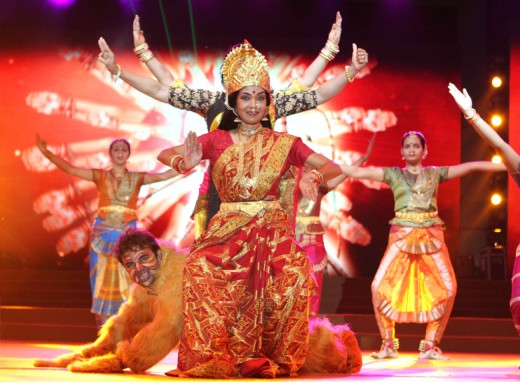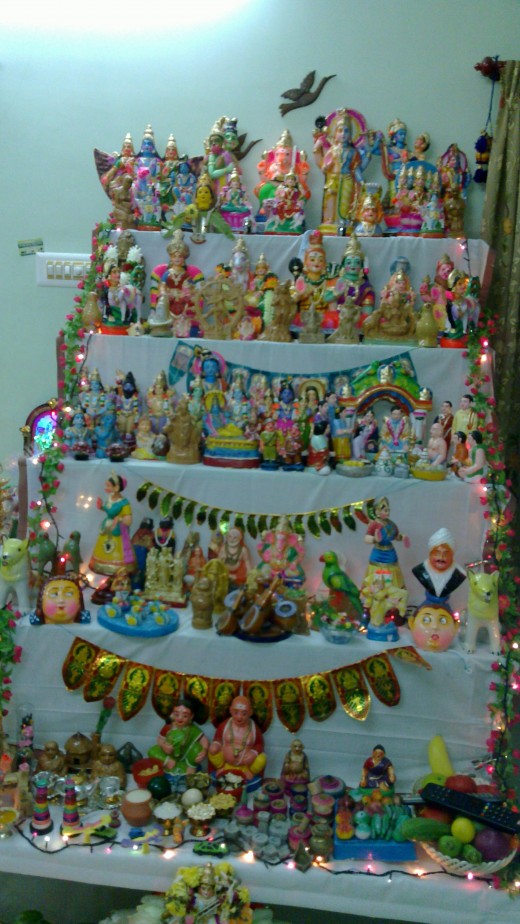Festival of India: Navratri
Updated on October 13, 2015
Grand start to Navratri festival in Ahmedabad

Navaratri (Navaratra): Significance of Festival
Navratri (Navaratri, Navratra) is one of the most auspicious festival for Hindus of India. The festival is also called Navaratra. India observes Navratri festivals twice in a year. Once in Chaitra and another in Ashwina. Nava means number nine in Sanskrit language and Ratri means nights. Hence the word Navaratri means nine nights.
(Navaratri is commonly spelled in English as Navratri)
Hindus of India and abroad worship Devi Durga, a ten-armed goddess, who destroyed evils and brought peace in the universe. (Devi Durga is depicted with eight arms in some places). She is worshiped in different names and manner during nine days of Chaitra i.e. New moon day of Chaitra Shukla Pratipada to Navami the ninth day of lunar calendar. The same is repeated exactly after six lunar months according to Indian calendar.
This time it is in the Ashwina, i.e. Ashwina Shukla Pratipada to Navami, the ninth lunar day. These nine days of Navratri are considered as one of the most auspicious time of the Hindu Calendar. Nine different forms of Devi Durga are worshiped over these nine days and nights.
Navaratra falls between September 19 and September 27 in year 2009.
Navratri Kolu special

Significance of Navaratri
During Navratri, People invoke Shakti, the energy aspect of God in form of Durga, the universal Divine mother. The word Durga in Sanskrit language means remover of miseries in life. Hindus believe her as energy behind creation, preservation and destruction of the universe. Durga symbolizes eternal energy or force behind motions in the universe. Hinduism salutes the motherly affection of god in form of divine mother Durga, the Adya Shakti during Navratri.
Divine power Durga comes in three forms of energies, Maha Kali, Maha Laxmi and Maha Saraswati. Maha Kali is goddess of bravery, Maha Laxmi is goddess of wealth and Maha Saraswati is of wisdom and academics. Each form is allotted three days during the Navaratri (total of nine days). In typical cast system of traditional India, Brahmins (Academicians, wise and knowledgeable community) worship Mahasaraswati, Kshatriyas (Warriors) worship Mahakali and Vaishyas (Traders and Business communities) worship Mahalaxmi mainly. This is how India observes Navratri.
The earth moves round the sun and duration of days and nights are constantly changing round the year. Duration of a day and a night in India are almost equal during March-April and September-October. Navratri fall in these months. As the duration of days and nights are almost equal, the nature lives in equilibrium in these days. These are also moderate seasons. Neither scorching heat nor chill cold. These are perfectly suitable for worshiping balanced energy form of our eternity.
Chaitra Navaratri falls in beginning of summer end of winter. Similarly Ashwina Navaratri falls in beginning of winter and end of summer. Both seasons are crucial for our mental and physical health. Devotion and prayer keeps us mentally healthy whereas fast and other penance energize us to fight with diseases and keeps us healthy physically.
Mahishasur Mardini (Durga) Stotra
Navaratri: Pious days
Hindu community in India believe that Navaratri days are among the most auspicious days according to Vedic lunar calendar. It falls just after Shraddh Paksh or Pitri Paksh. Hindus perform their duties to ancestors in Shraddh Paksh and then start worshiping mother god. It comes at the end of rainy season and monsoon days. It is also beginning of autumn. Farmers in India become free in this particular time after long days of hard work. This is the time for rest and enjoy for them. We have to remember that maximum number of Indians are dependent on agriculture and farming.
Hindu communities perform auspicious activities during the days of Navaratri. They buy Gold, silver, Jewelry, Real estates/ land and building, new clothes and other products in these days. Engagement and ring ceremony, start living in a new house, Mundan sanskar are also common in these days. They also start new ventures in business such as opening a shop or starting an industry. Lots of economic and financial activities take place during these days. In fact, it boosts Indian economy.
It is not only a religious festival but also an economic festival. Shopkeepers prepare their shops especially for this festive season. Economic and festive activities starting from Navaratri continues up to Deepavali (Diwali) and Bhai Dooj. Vijaya Dasami or Dasahara also falls between these days.
Navaratri festivals in West Bengal
Festival of Navaratri is observed in different parts of India in varieties of way.Navaratri is observed in Bengal as Durga Puja. Durga is Mahishasurmardini in Bengal. It is the incarnation of Durga to destroy demon Mahishasura. Mahish means buffalo in Sanskrit and Asura means demon. Mahishasura is depicted in form of buffalo and ten armed Durga kills him with the help of her vehicle in the form of lion.Durga Puja starts on the sixth day of Navaratri that is called as Shashthi. People of Bengal worship Devi Durga during Maha Saptami (seventh day), Maha Ashtami (Eighth day) and Maha Navami (Ninth day), the final day of Navaratri.Typically, idols of Durga are made of clay in Bengal.These idols are taken into a procession after completion of Puja and drowned to river Ganges or some other sacred rivers. The act of drowning the idol is referred as Bhasan or Bisarjan in local language. It is done on Vijaya Dasami, tenth day of Ashwina Shukla Paksh in lunar calendar.Bengali celebrates Durga Puja with great enthusiasm. Kolkata is pioneer in arranging Durga Puja. Puja pandals are decorated with gorgeousness. Celebrities in Bengal are also called to Puja pandals.Bengali buy and wear new clothes and shoes customarily during Durga Puja. They also intend to buy gold and jewelry during these days. Shops are decorated and filled with new range of products. Government and private companies issues yearly bonus before Durga Puja. Schools, colleges and other educational institutes declare Puja vacation during these days. All these features encourage customers for window shopping. Both retailers and whole sellers get good business during these days.
Bengali also prepare different varieties of traditional Bengali sweets besides rasogolla and sandesh. They often gift sweets and other things to friends and relatives. They perform Kolakoli (Hugging) on Vijaya. It is customary for them to meet and greet each other.
Dandiya in Gujrat and Navpad Oli
Durga is famous in Gujrat as Amba or Ambe. Navaratri i.e.Navratra in Gujrat is celebrated with Garba dances. People of all ages assemble to perform dandiya nrutya. It is a traditional form of worshiping the goddess as well as enjoying the festival.
Dandiya and garba is performed with great enthusiasm. It is so popular that it is celebrated in huge pandels as events. Not only Gujratis but people from all sects, casts and communities participate in the same.
A sizable population of Gujrati people live in Mumbai (Bombay), the financial capital of India. Hence Dandiya and Garba dances are organized as events in Mumbai too. Even the film stars and other celebrities participate in these events. These occasions provide event managers an opportunity for their business.
Jain community of India also celebrates nine days as Navapad oli. These nine days are little different from Navaratri. Navapad Oli also comes twice in a year in Chaitra and Ashwina. It starts from Shukla Saptami (Seventh day of lunar calendar in bright fortnight) and ends on the Shukla Purnima (the full moon day). Jain community worship Navapad (Siddha Chakra) by performing Ayambil tapa (Penance), a special type of fast.
What do you think about this article? I am eager to hear from you. Your valuable suggestion will improve quality of the hub. Please feel free to comment on this hub. Your comments are valuable for me and other readers..
You may also bookmark it with stumble upon, facebook, digg or whatsoever social networking site you use to keep your book marks or mail it to your friends and family. I will appreciate your effort.







कोई टिप्पणी नहीं:
एक टिप्पणी भेजें